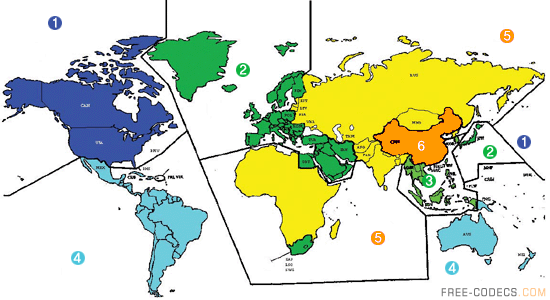DVD Digital Copy Protection (Madness)
In this article, we break down the methods used to prevent unauthorized copying and secure digital content on DVDs.
Basic protection
The Content Scrambling System (CSS): is used to scramble the audio/video data on a DVD-Video disc. Each video title set (VTS) can be selectively scrambled using a unique key.
Each unique title is assigned one Disc Key and up to 99 Title Keys (one per VTS), which are stored on the disc in encrypted form. In the decoder, the original keys are obtained by decryption and used to descramble the data. Only the video data is encrypted.
For DVD-ROM drives, the MPEG-2 decoder challenges the drive and receives the necessary keys for decryption. This ensures that only approved hardware/software can be used.
The keys used should be unique for every disc title and are encrypted by the CSS Licensing Authority and, usually, the scrambling is carried out during glass mastering. Security is vital and the keys used plus the encryption algorithms must be kept secret. Only those companies involved in designing hardware and software for CSS encoding and/or decoding need information on the algorithms and systems used.
DVD Region Coding: DVD-Video discs that are CSS copy protected can also be region coded to prevent e.g, a U.S. disc playing on a European player and vice versa. This allows titles to be distributed in different parts of the world at different times. A total of six regions (or locales as they are called) have been defined to cover all countries.
- Region 1 (R1): The U.S., U.S. territories and Canada
- Region 2 (R2): Europe, Japan, the Middle East, Egypt, South Africa, Greenland
- Region 3 (R3): Taiwan, Korea, the Philippines, Indonesia, Hong Kong
- Region 4 (R4): Mexico, South America, Central America, Australia, New Zealand, Pacific & Caribbean Islands
- Region 5 (R5): Russia, Eastern Europe, India, most of Africa, North Korea, Mongolia
- Region 6 (R6): China
Find out how it was coded
The Region Code is usually specified on the back of the individual DVD packages, either with a Regional Coding logo of a globe with the region number superimposed over it, or specifically spelled out.
For example, while currently-released New Line and Warner DVD titles use the globe logo & number scheme, MGM/UA titles state: "This disc has been encoded for Region 1: The United States, U.S. Territories and Canada." In the cast of Lumivision's discs, they are labelled "Available worldwide," which means that the discs contain no regional coding and will play on any player in any country.
It still doesn't play!
Now, as if this system of region encoding doesn't cause enough problems for the consumer not all discs of the same film with the same region are created equally. In region one discs intended for release in the United States are often not the same as those for Canada. So, when you buy a DVD you have to check the region code, the video format, the transfer specifics and the extras.
Some more protection
Region Code Enhancement (RCE): one new aspect of region coding is Region Code Enhancement. This is designed by the studios to prevent viewing a Region One disc on a Region Free DVD player. It will not prevent watching the movie on a MultiRegion Player. The reason for this is to prevent people from the popular practice of hacking the player to be able to view all region discs. So far some Warner Bros, New Line, Columbia and now select MGM have this feature.
And... the final hitch
Since the world is also divided into the NTSC, PAL, and SECAM video systems, the user still needs a multi-system TV to access DVDs pressed in one of these systems.
Although this is difficult in the U.S., where all video is based on the NTSC system, many users in Europe and some other parts of the world do own multi-system TVs that can view DVDs pressed in either NTSC or PAL.












